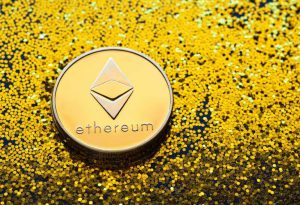
Table of Contents
ToggleYou may have ever heard of Gavin Wood. This is a British computer programmer mostly known for being the co-founder of Ethereum and the creator of Polkadot.
He is not only known for these two positions. Wood was also responsible for inventing what we know today as Solidity and for writing the Yellow paper on the current Ethereum virtual machine.
History of Gavin Wood
Wood had a past before developing Ethereum. This past was quite remarkable, as he worked as a scientist and researcher at Microsoft’s company. He later came to Ethereum becoming a co-founder after meeting Vitalik Buterin and Jonny Bitcoin. All this stage took place during the years 2013 and 2014.
Wood succeeded in discovering Ethereum’s network coding language called Solidity and following this event he published in 2014 the Ethereum Virtual Machine Yellow Paper representing Ethereum’s smart contract execution system.
Wood held the position of first chief technology officer at Ethereum’s foundation until 2016 when he moved on to found Parity Technologies, formerly known as EThcore. Ethcore was developed for the Ethereum network. With this project he developed software dedicated to companies using blockchain technology with the help of a former Ethereum Foundation worker, Jutta Steiner.
The company launched, in 2016, the new Parity Ethereum software client on Rust. This began to perform as Parity’s CWO as of 2018.
In addition, Gavin founded what is known as the Web3.0 Foundation. This is a non-profit foundation focused on Internet infrastructure and technology. This project starts with the Polkadot network.
In short, Wood worked for Ethereum until 2016 where he decides to create his own company Parity Tecnologies which specializes in the development of core infrastructure for Ethereum and with this for Bitcoin, ZCash and Polkadot.
Gavin Wood and Ethereum
Wood’s story in relation to Ethereum presents its beginnings in 2013 when the programmer had 15 years of experience in open source coding. At this stage of his life he met Vitalik Buterin. In a matter of weeks Wood joined Buterin and turned Ethereum into more than just a white paper.
In January 2014 Wood, together with Vitalik, had already written Ethereum’s PoC-1 and this was presented at the Bitcoin Conference of America. Half a year later the co-founders met in Switzerland to finally found the Ethereum network. In the meantime, Wood was working on devising the foundations of the project to come, Solidity.
Wood wrote the foundations, the structure of the blockchain, the Yellow Paper and the rest of the specifications needed to shape this new infrastructure. In 2016 Wood founded Parity Technologies and managed to develop the infrastructure of Ethereum and other Web 3.0 networks. He also managed to decentralize the web carrying out a wave of technological revolution.

Gavin Wood and Polkadot
As Parity Tecnologies developed, Wood began to address certain thoughts about the expected version of Ethereum that would include fragmentation. As he waited he began to find certain obstacles that would put the blockchain in the face of fragmentation and after four months he came up with a solution.
The solution achieved a heterogeneous framework for multiple chains that came to be called Polkadot. This protocol was launched in 2017 thanks to the efforts of Parity Tecnologies and Web 3.0 Fundation. The technology presented by this project was expressly designed to support the decentralization of the web.
Other innovative spin-off projects such as Substrate followed Polkadot. This project establishes a framework that allows users to build their own blockchain. Another innovation was Kusama. This project is completely independent from Polkadot, however, it runs on the same software as a testing ground.
Unlike Ethereum, Polkadot (DOT) allows each user and developer to create their own blockchain. It gives them the freedom to choose the types of fees they will charge and how quickly transaction blocks will be confirmed.

